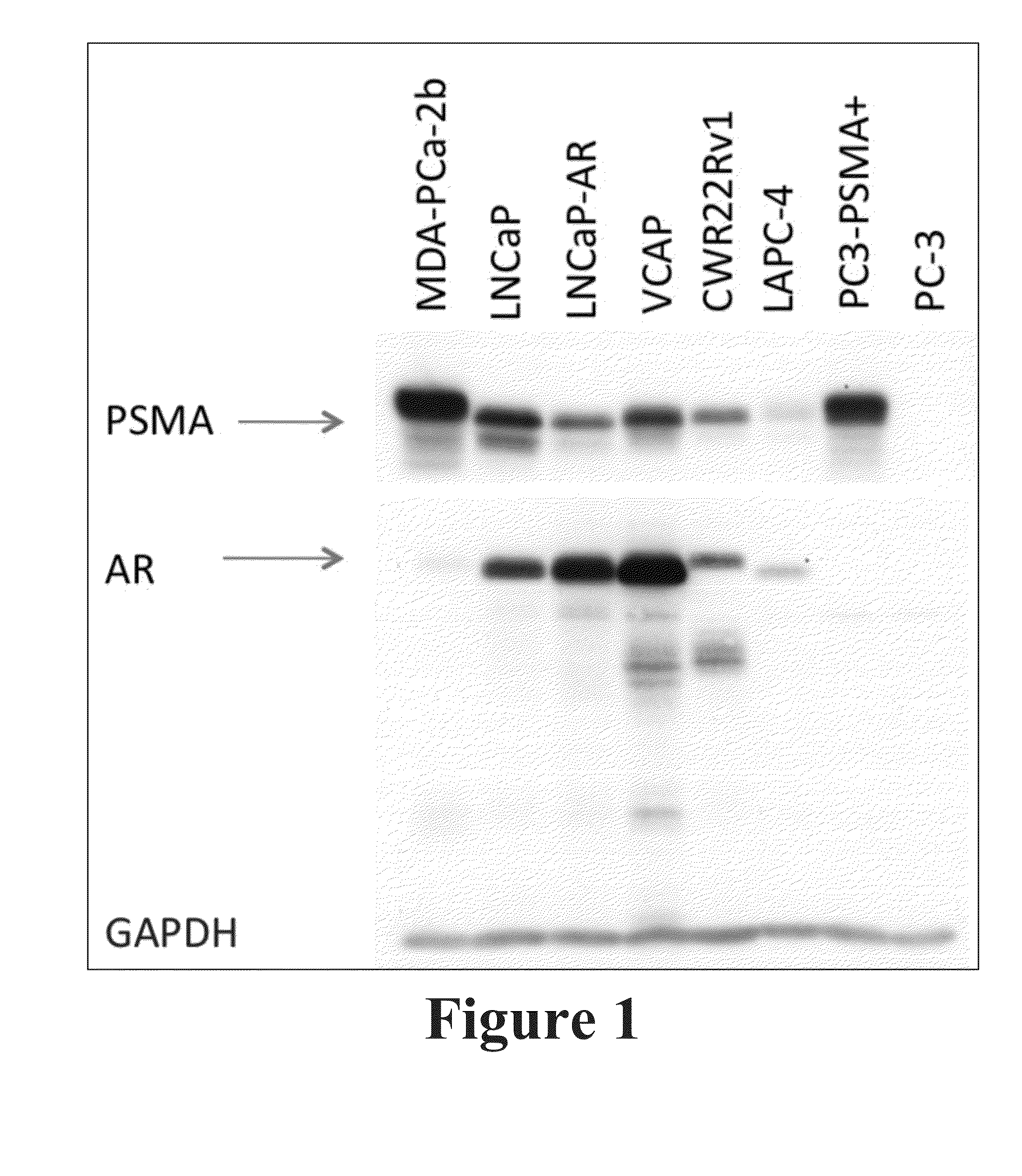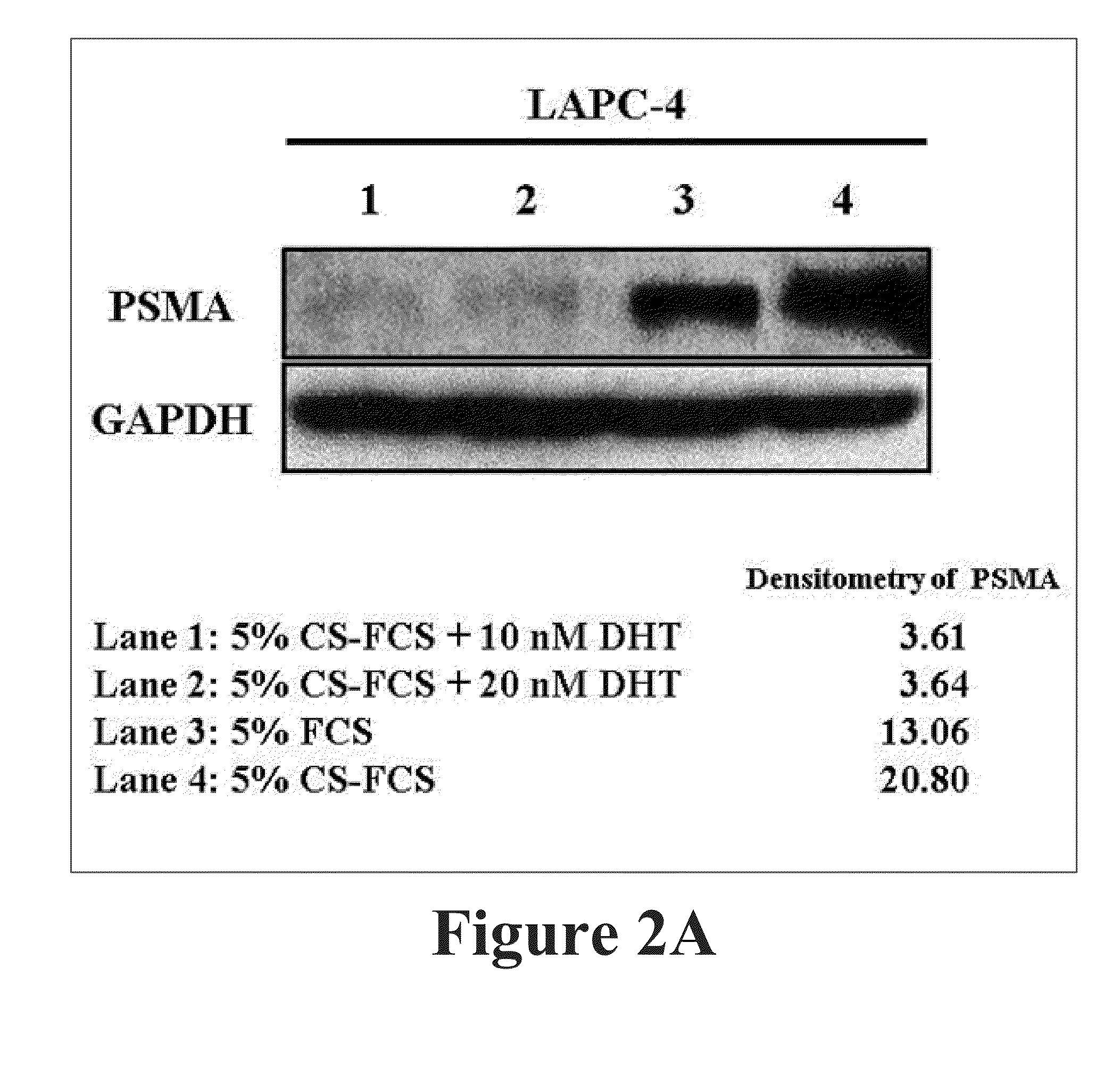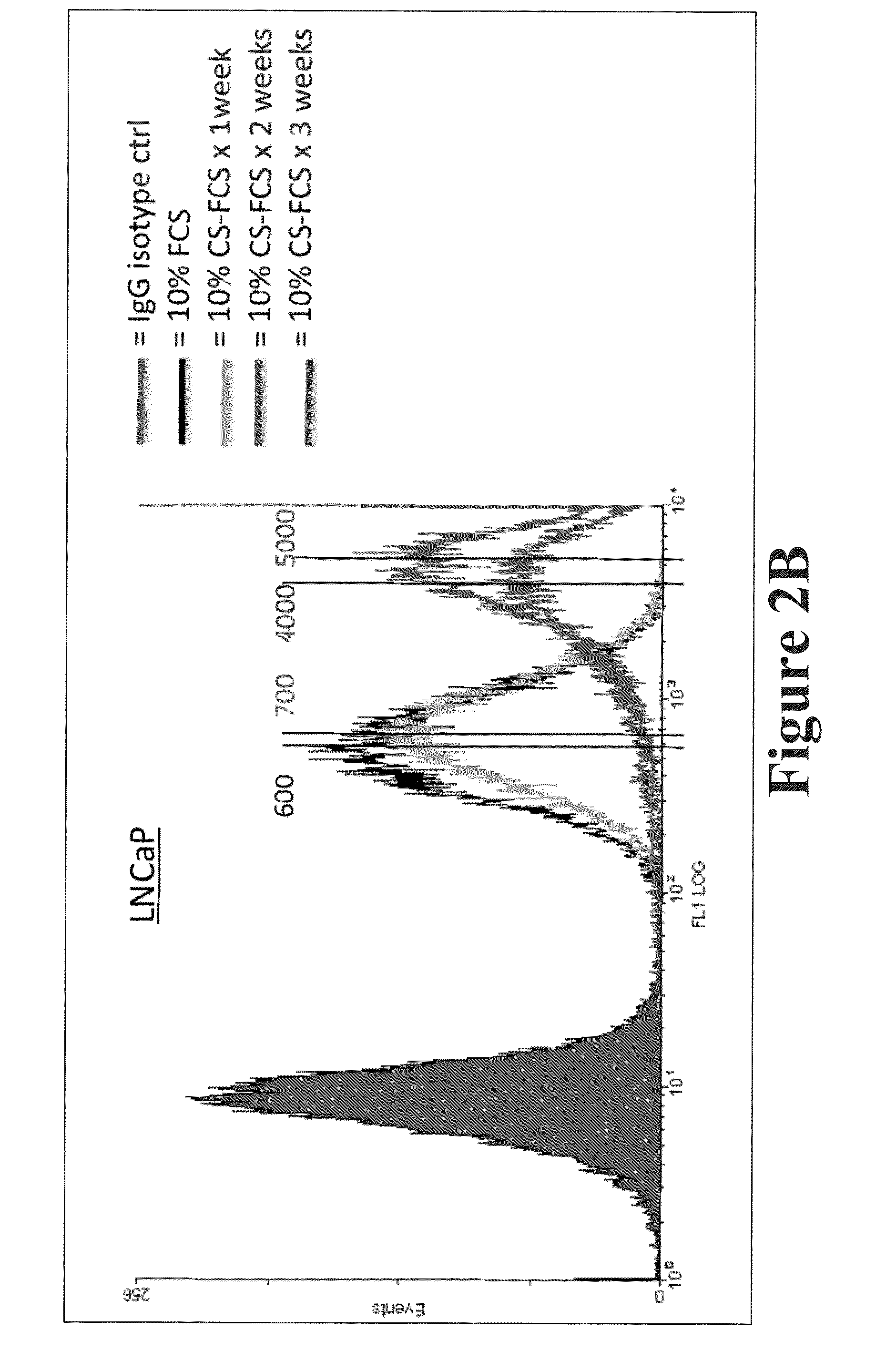PSMA as a BioMarker for Androgen Activity in Prostate Cancer
a biomarker and prostate cancer technology, applied in the field of psma as a biomarker for androgen activity in prostate cancer, can solve the problem of underestimating actual hormonal effects, and achieve the effect of increasing psma expression
- Summary
- Abstract
- Description
- Claims
- Application Information
AI Technical Summary
Benefits of technology
Problems solved by technology
Method used
Image
Examples
Embodiment Construction
Expression of PSMA and AR by Eight Cell Lines
[0015]For western blots, equal amounts of cell lysates were loaded in each lane. PSMA was detected by monoclonal antibody (mAb) J591; AR was detected by mAb anti-AR (AR441). GAPDH was used as a loading control. Six of the cell lines (MDA-PCa-2b, LNCaP, LNCaP-AR, VCAP, CWR22Rv1 and LAPC-4) expressed both AR and PSMA. MDA-PCa-2b expresses a relatively low level of AR, just barely visible at this exposure. CWR22Rv1 expresses a slightly larger AR protein (114 KD, instead of 110 KD) due to duplication of exon 3). PC3 and another cell line, DU145 (separate gel, not shown), were AR− / PSMA−. PC3-PSMA is the PC3 line stably transfected with PSMA.
[0016]Human prostate cancer cell lines, LNCaP, CWR22Rv1, MDA-PCa-2b and LAPC-4 were purchased from American Type Culture Collection (Manassas, Va.). LNCaP / AR and PC3-PSMA were gifts from Charles Sawyers and Michel Sadelain, respectively (MSKCC, NY). LNCaP, LNCaP / AR, and CWR22Rv1 cells were maintained in RPM...
PUM
| Property | Measurement | Unit |
|---|---|---|
| time | aaaaa | aaaaa |
| time | aaaaa | aaaaa |
| imaging | aaaaa | aaaaa |
Abstract
Description
Claims
Application Information
 Login to View More
Login to View More - R&D
- Intellectual Property
- Life Sciences
- Materials
- Tech Scout
- Unparalleled Data Quality
- Higher Quality Content
- 60% Fewer Hallucinations
Browse by: Latest US Patents, China's latest patents, Technical Efficacy Thesaurus, Application Domain, Technology Topic, Popular Technical Reports.
© 2025 PatSnap. All rights reserved.Legal|Privacy policy|Modern Slavery Act Transparency Statement|Sitemap|About US| Contact US: help@patsnap.com



